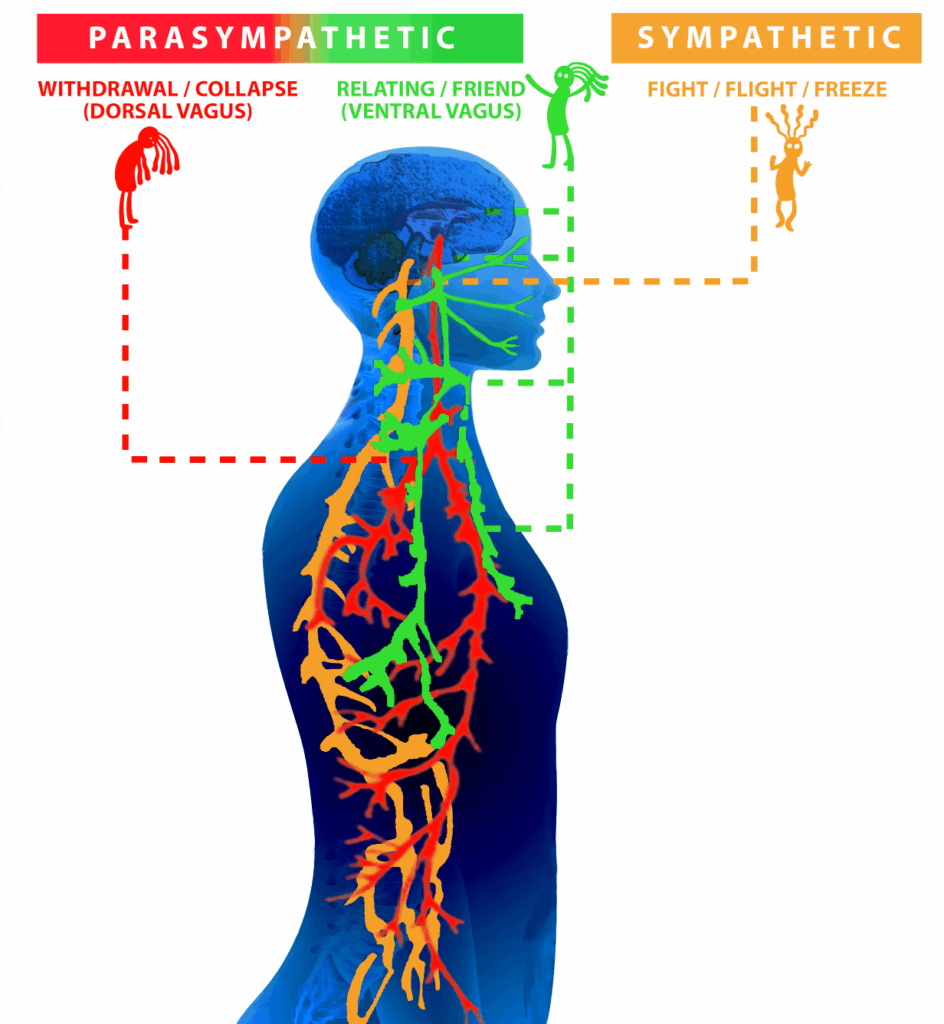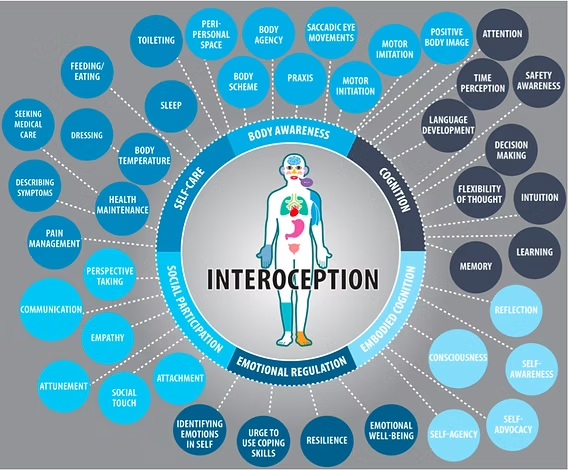Have you ever felt like your body is running the show, even when your mind knows you’re safe? That’s because trauma doesn’t only live in your memories, it also lives in your nervous system. When the Autonomic Nervous System (ANS) gets stuck in survival mode, life can feel overwhelming, exhausting, or numb. Whether you’re “stuck on” in constant hyperarousal (fight/flight), or “stuck off” in hypoarousal (freeze), your body struggles to return to its natural rhythm of safety and rest.
Understanding Stuck States in the Nervous System
Your ANS works 24/7 to scan your environment and decide how safe or unsafe it is. Depending on its reading, your body shifts between three primary states:
-
Parasympathetic (Safety) – the “rest and digest” state where you feel calm, present, and connected.
-
Sympathetic (Fight/Flight) – a state of hyperarousal that prepares you to face danger.
-
Dorsal Vagal Freeze (Life Threat) – a shutdown state of collapse, numbness, or dissociation.
These states are meant to protect you. The challenge is when past trauma, whether childhood adversity, acute trauma, or long-term stress, locks your system into these heightened states, even when there’s no danger in the present.
When You’re Stuck “On” (Fight/Flight)
-
Racing thoughts, irritability, and hypervigilance
-
Trouble sleeping or resting
-
Poor digestion
-
Difficulty pausing before reacting emotionally
When You’re Stuck “Off” (Freeze)
-
Feeling emotionally flat or disconnected
-
Struggling to maintain close relationships
-
Low energy or chronic fatigue
-
Poor digestion and sleep
-
A sense of being collapsed or invisible
Neither state is wrong, they were once protective. But when we live there long-term, they keep us from fully engaging with life.
How Trauma Healing Unlocks Flow
To heal, the body needs more than just intellectual understanding. We must build the capacity to feel into and track uncomfortable sensations connected to fight, flight, or freeze. By staying present with these sensations and expressing the emotions linked to them, we help discharge the “bound survival energy” that keeps us stuck.
As this happens, something remarkable unfolds:
-
Your posture naturally opens and aligns.
-
Facial muscles and nerves relax.
-
Gut instincts become clearer and more trustworthy.
-
Choices begin to feel life-enhancing instead of fear-driven.
This process is not about reliving trauma, but about integrating it through the body so that the nervous system can return to balance.
Building Internal Safety and Resources
The foundation of healing is safety, or at least enough safety to explore what once felt overwhelming. Stuckness in the nervous system reflects how unsafe we once felt, often during developmental years. But healing means we can strengthen our inner resources now, at any age.
Through somatic practices like breathwork, gentle movement, and interoceptive awareness, we begin to feel into our bodies again. Over time, this shifts the nervous system out of survival mode and into regulation, creating space for vitality, connection, and joy.
A Reflection for You
Pause for a moment. When stress or conflict arises, which state do you tend to fall into?
-
Hyperarousal (Fight/Flight)?
-
Hypoarousal (Freeze)?
Recognizing your patterns is the first step toward healing them. From here, you can gently cultivate the capacity to feel into your body, shift stuck patterns, and thrive in all areas of your life.
Ready to Restore Your Flow?
If you’re ready to reconnect with your body and bring your nervous system back into balance, join me inside The Collective, my monthly Somatic Teachings membership where we practice tools that support healing, resilience, and flow.
Learn more and join The Collective here
Feel free to click here for a brief video on how to know if you are a Fight/Flight or Freezer and what to do!
Also, check out this previous blog on FFF + Fawn to learn more about what these 4 states physically look and feel like by clicking here.




